Advice Agile Leadership Quick Scan - Full
Special for you: Tailored Advice
You've answered all the questions! Well done!
Based on these answeres we've developed several tips and advices. The advices consists of 4 Dimensions. By clicking on 'See detailed tips' you can see how you scored with each answer.
Tip: Copy the url of this page to store your advice.
What's next?
After you've read all the tips and advices, what's next? What is a good next step?
- Let others also fill in this Quest and compare the results.
- Organize a brainstorm session of 60 min to create better insight and come with tangible actions how to improve.
- Want to go further? Contact one of the senior leadership coaches for an assessment or leadership workshop.
Your score
Here you see your score in the different dimensions. The maximum score is 100%
- Customer Focus: 50%
- Team Ownership: 62%
- Learn Faster: 70%
- Healthy Culture: 33%
1: Customer Focus
Improve the customer centricity and Improve the customer centricity and outcomeoutcome
Customer focus isn't about giving products for free, or doing blindly everything what the customer asks you to do. Customer focus is the deliberate choice that the profit is less important than the customer impact and benefits. It's about having a clear product vision and using customers' feedback to learn. This gives the company an out-wards, external focus. Customer focus is about believing that this era requires a total different way of leading organizations.
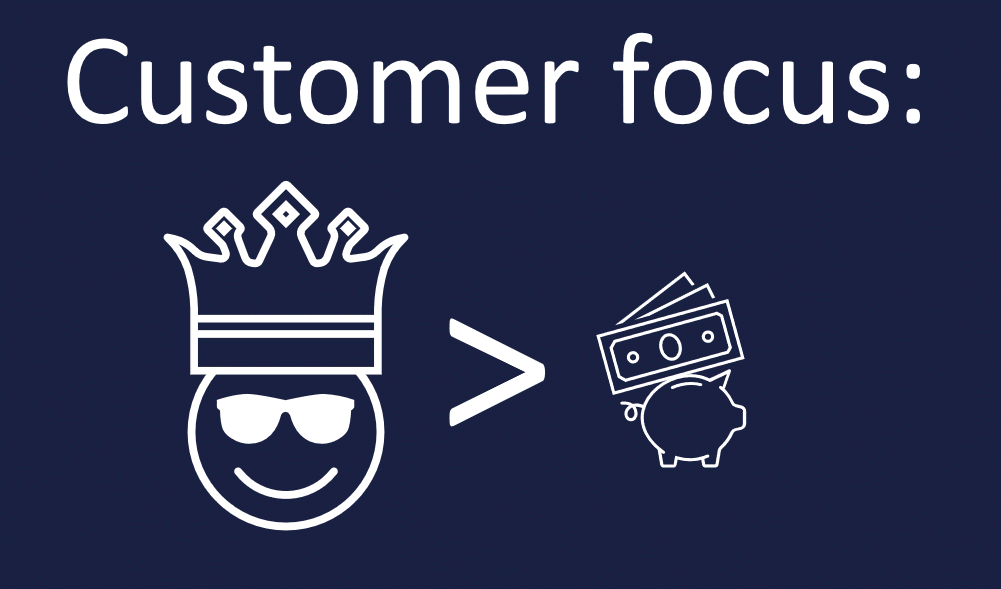
Feedback and tips based on your answers
You scored low on Customer Focus. This could mean that there is the tendency to have an inside and internal focus. Too much focus on process and procedures, not on outcome and the users. It’s a good idea to make formulate the customer benefit of several strategic topics. You can start by (re-)formulating a clear customer-oriented-vision.
It can help to ask yourself how you communicate your vision and goals to the teams? Did you visualize them? Are the goals focused on improving your internal process or are they client focused?
Challenges or pitfalls you will probably encounter when also nobody else is creating a customer focus:
- Resistance – teams will probably don’t understand your changed behaviour. The tip is to also communicate why you want more customer-focus.
- Ineffective – teams probably aren’t working towards their full potential. They are doing their work but need an ambitious goal to think outside the box.
Tip: Brainstorm with Scrum Masters
Look inside the organization to more experienced agile people and ask them how you can improve the customer focus.
Tip: Read ‘Agile Leadership Toolkit’
You probably have to cover many miles to increase the customer focus. A good starting point is to read the book ‘Agile Leadership Toolkit’.
Order the bookMore info >>1: What would best describe your customer focus?
Your answer: The customers are briefly mentioned in our strategy or vision
Improve towards: We use customer-oriented success criteria
2: What would best describe the product backlog management? #1/2
Your answer: The backlog is a list of features, requests and/or bugs
Improve towards: We use insights on customer usage and/or customer feedback to prioritize
3: What would best describe the product backlog management? #2/2
Your answer: The backlog is prioritized with/by internal stakeholders
Improve towards: The backlog is prioritized by a single Product Owner
4: What would best describe the items in your product backlog?
Your answer: The items are really technical
Improve towards: The items are described from the perspective of the customer
5: What would best describe the goals and objectives of the teams?
Your answer: The teams have a goal but it isn't actively used
Improve towards: The teams have a tangible goal that is alligned with the other teams/tribes/departments
2: Team Ownership
Make the teams more pro-active, proud and engaged
Team Ownership isn’t about infinite freedom or just optimizing the happiness. Team Ownership is all about the mental vibe of the team. They take ownership of the products and services they deliver to their users. This means that these teams voluntarily take responsibility for the results that a product or service delivers. Teams that take ownership are different: proactive, with passion and energy to really make an impact for the users of their product. They work together, give each other feedback, improve, are open-minded and learn continuously. They also help other teams to grow. In addition, they realize that they own their challenges, solutions and customers. This gives the teams pride, creativity, energy, passion and satisfaction in their work.
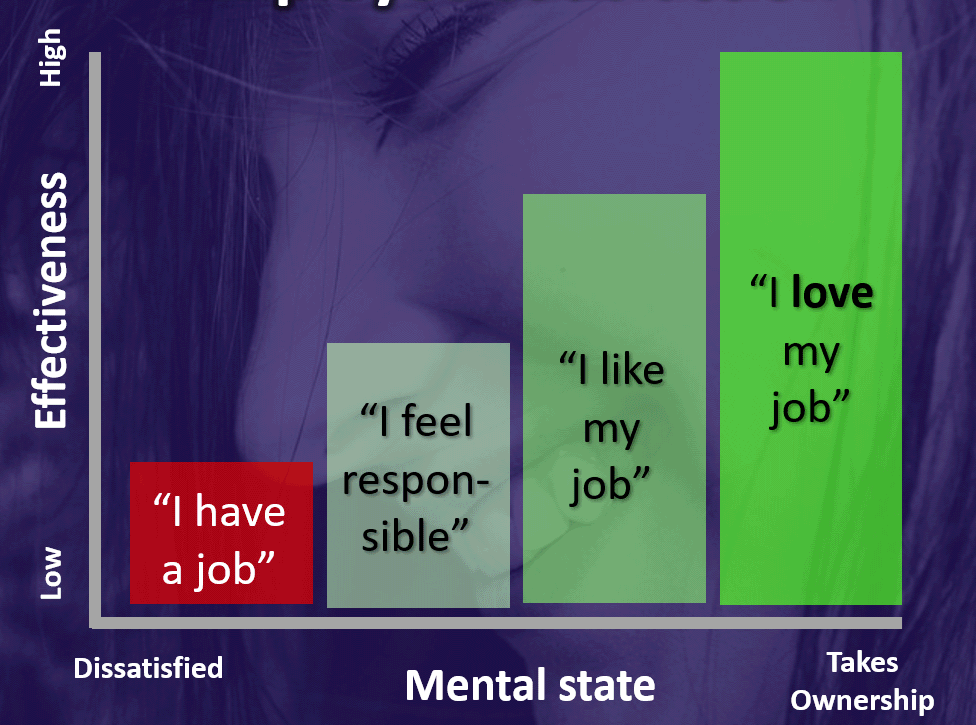
Feedback and tips based on your answers
You scored average on Team Ownership. That probably means that you’re focused on teams and believe in the strength of self-managing teams. Don’t underestimate the importance of Team Ownership. Netflix states that high performing teams aren’t just 20% or 50% more effective, but are 1,000% more effective! Investing in Team Ownership is worth every minute.
What to improve further? Especially decide to invest (even more) time every week in improving the team ownership.
Tip: Sit monthly with all the teams
Spent time to really listen and perceive the energy level of a team. Ask questions about:
- their engagement,
- how much they feel valued,
- and what drains their energy
Tip: Create clarity on high performing
Use the Ownership-Model to create tangible clarity on the team development. Let the teams invest
Tip: Have an inhouse Leadership Workshop
Contact with Re-lead and have a tailored workshop with all the members of the management team.
1: What would best describe a team (or squads)
Your answer: Only a few people are also working in another team
Improve towards: Everybody really has one 'home' team where most time is spent
2: What would best describe the team ownership?
Your answer: Sometimes we talk about team ownership
Improve towards: It's (one of) the focus area(s) of the leaders
3: What would best describe the scrum master (or agile coach) of a team
Your answer: Most teams don't have them
Improve towards: Every team has a scrum master or agile coach
4: How active is the team ownership improved?
Your answer: It was a topic of the past, but it's not any more
Improve towards: The manager/leader really invests hours a week to improve it
5: What would best describe the team development approach?
Your answer: Teams do invest in their growth
Improve towards: The growth of a team is actively followed and impediments are removed
6: What would best describe the important role of the Scrum Masters (or agile Coaches)?
Your answer: The manager/leader sometimes emphasizes the importance
Improve towards: The manager/leader supports and promotes the Scrum Masters
3: Learn Faster
Increase agility by learning faster from customers
Agility is the ability to learn fast from feedback of your customers and users. Your role as an agile leader is to create an environment where teams can safely run experiments and continuously learn faster.
In fast changing and complex markets, one of the best proofs of success can be found outside the company. Not with internal metrics of efficiency or output, but by external metrics around the customers. The quicker the teams get feedback from users on the things they do, the faster the teams can learn and improve.
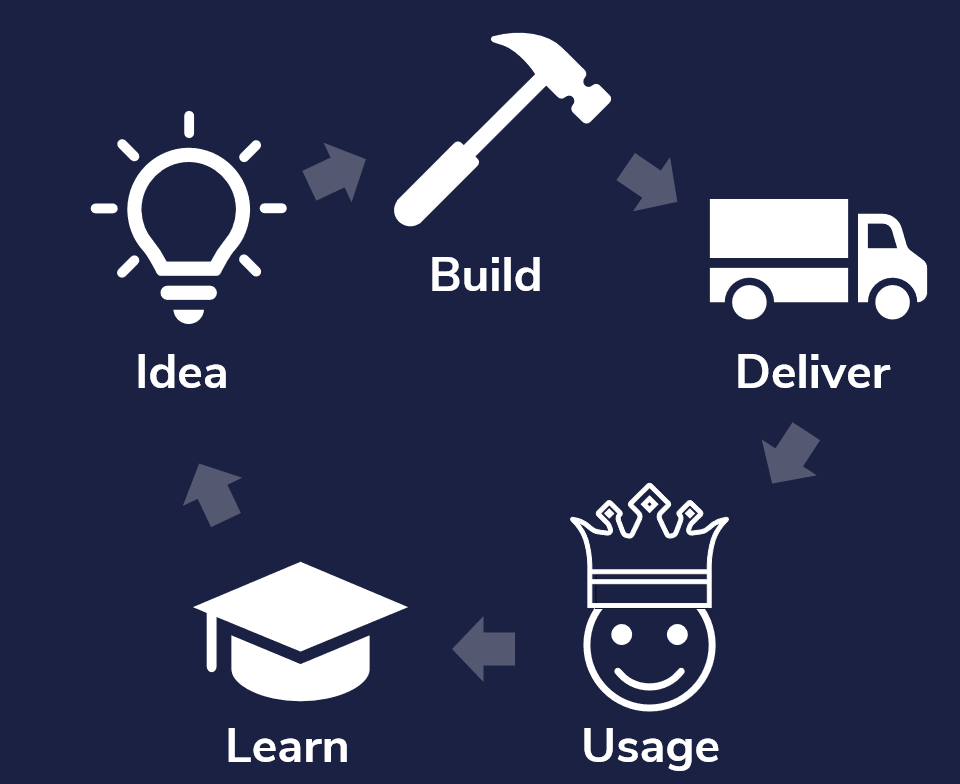
Feedback and tips based on your answers
You scored average on Learn Faster. This probably means that you are using some customer data in your process. But there is a lot more to do.
Tip: Set goals on usage statistics
Estimate upfront what you think your customers and users will do. And after releasing the new features or marketing campaigns, actually measure if it matches expectations. And after that: learn from it and come with tangible tips to improve.
Tip: Use the Validated Learning Board
The Validated Learning Board (VLB) is a powerful tool to look at the whole process from idea to actual usage.
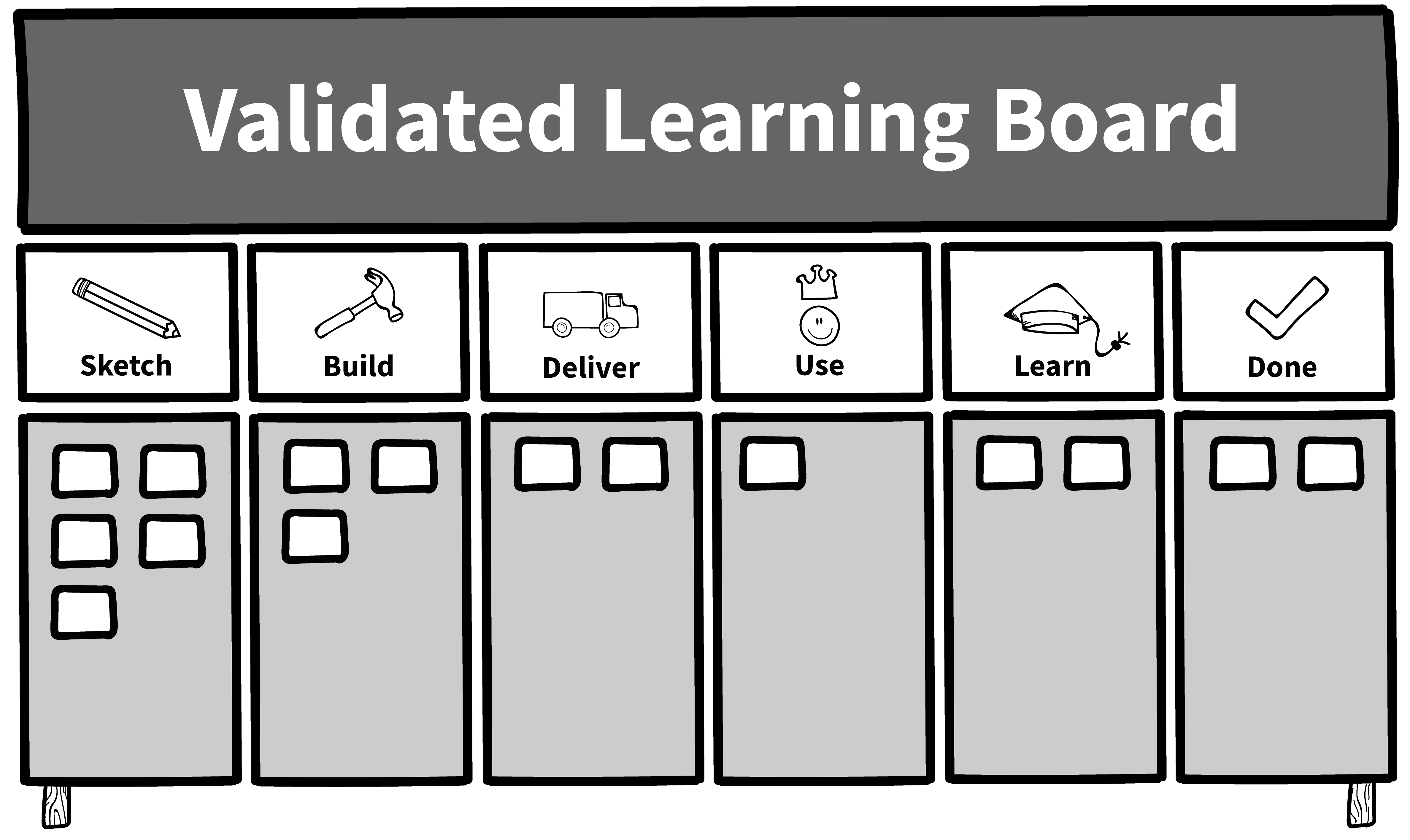
1: What would best describe your value delivery process?
Your answer: We actively measure our outcome (or value)
Improve towards: We invest in learning how to optimize the outcome (or value)
2: What would best describe your innovation?
Your answer: We do (upfront) market research
Improve towards: Innovation is integrated with our daily work
3: What would best describe your value validation process?
Your answer: The process is sometimes used
Improve towards: We use the 'validated learning board' or simular tool
4: What would best describe your learning speed?
Your answer: We actively measure or learning speed
Improve towards: We actively optimize our learning speed
4: Healthy Culture
Get the right environment for agility
The fourth role of an agile leader is the role of culture leader. Agile is a mindset, not a framework or a tool. So for an organization to become agile, it’s important to create an agile culture that aligns with this mindset. An important way to influence is by creating healthy habits and getting rid of unhealthy ones. As an agile leader, you act as a role model for your teams and it’s important that you are clear on the behaviour you believe is acceptable and unacceptable.
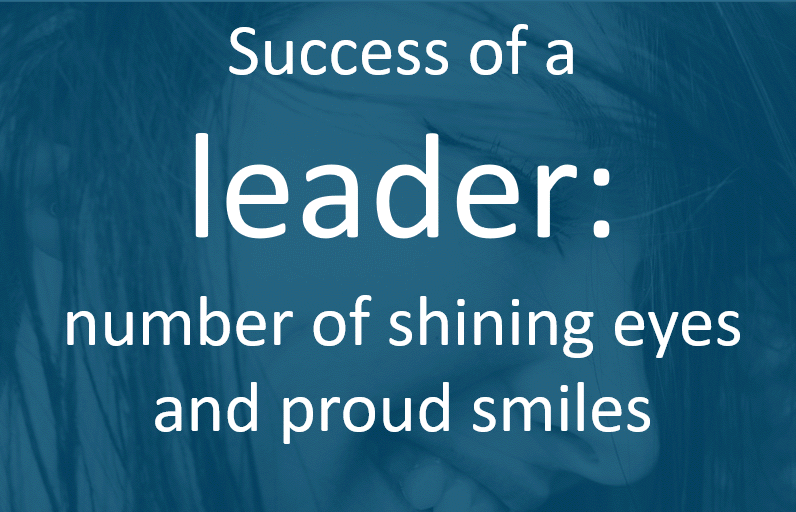
Feedback and tips based on your answers
Improving the culture is complex and very specific to your situation. Read the below detailed tips to get some first improvements. Contact the leadership consultants and get more advice
Contactor ask a question >>1: What would best describe your culture?
Your answer: We try to avoid talking about it
Improve towards: The culture is (also) focused on teams and collaboration
2: How well does the culture fit with agile?
Your answer: Our culture and agile don't fit
Improve towards: We have a strong and good agile culture
3: What would best describe the informal leaders?
Your answer: Our informal leaders (or hero's) don't care/like agile
Improve towards: Our informal leaders promote the agile mindset
Feedback?!
What do you think of the above advice? Please let me know! Contact me on LinkedIn Peter Koning
Tip: Copy the url of this page to store your advice.
What's next?
After you've read all the tips and advices, what's next? What is a good next step?
- Let others also fill in this Quest and compare the results.
- Organize a brainstorm session of 60 min to create better insight and come with tangible actions how to improve.
- Want to go further? Contact one of the senior leadership coaches for an assessment or leadership workshop.